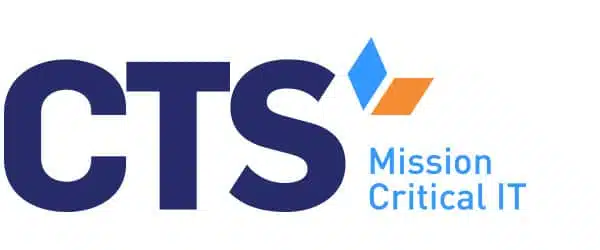Nonprofits are no strangers to doing more with less. Tight budgets, complex approval chains, and lean teams all create a daily balancing act. Technology should ease that pressure, not add to it. Yet many organizations still run on outdated systems, patchwork tools, and scattered files across physical hardware or rogue platforms.
Modern cloud solutions are built for flexibility, scale, and control. For nonprofits, that means tools that support the mission without draining the budget. These platforms shift the entire operational system toward agility, automation, and security.
Let’s explore five essential IT cloud solutions that help nonprofits cut waste, boost collaboration, and strengthen data security and compliance, so they can focus on impact, not IT issues.
Cloud-Based Productivity Suites
Email and document editing aren’t revolutionary, but how they’re delivered makes all the difference. Traditional software models are rigid, require constant updates, and tie users to specific machines. Software as a Service (SaaS) platforms like Microsoft 365 and Google Workspace flip that script. Microsoft in particular offers special deals and services for nonprofit organizations.
Cloud-based productivity suites enable staff and volunteers to:
- Work from anywhere, on any device.
- Edit documents in real-time with teammates.
- Use tools that evolve continuously without manual installs.
For nonprofits juggling grants, reports, and multi-department communications, these cloud-based collaboration tools simplify daily work. Shared calendars, real-time co-editing, and version history are necessities when time and transparency are limited.
Microsoft Azure and Google Cloud also allow seamless integration with other services, letting you expand into cloud document management solutions or data storage without switching ecosystems. These services provide nonprofits with:
- Built-in cloud security solutions that safeguard sensitive donor and program data.
- Easy file access, reducing reliance on unsanctioned platforms and shadow IT.
- Scalable user licensing that helps match budget with actual usage.
Cloud Storage and File Sharing
Disorganized files are frustrating—and they’re a real risk. When documents live on local drives or personal email chains, version control disappears, security suffers, and productivity tanks.
Cloud document management solutions like SharePoint, OneDrive, and Dropbox Business bring structure back to file storage. These platforms are a centralized, smart environment for managing content, permissions, and collaboration. They enable:
- Staff to access documents securely from anywhere.
- Real-time syncing, which eliminates “Which version is this?” confusion.
- Admins to control sharing, retention, and access with ease.
Nonprofits often face the challenge of onboarding new team members quickly. Cloud platforms simplify that process, allowing new hires to jump in without digging through disconnected folders or emailing for access.
Learn more: How to Securely Migrate from Google Cloud to Azure
Cloud-Based Accounting and Fund Management
Tracking funds and managing grants demands more than spreadsheets. Financial oversight must be fast, accurate, and audit-ready, especially for nonprofits accountable to boards, donors, and regulatory agencies.
SaaS-based accounting tools like QuickBooks Online and Sage Intacct offer powerful alternatives to outdated desktop software. These platforms bring flexibility and automation to budgeting, invoicing, and reporting.
These accounting tools provide:
- Real-time dashboards that give leadership instant visibility into funding status.
- Grant tracking and cost allocation built into the system.
- Multi-user access that ensures transparency across departments.
Hosted on secure cloud servers, these tools remove the need for in-house physical hardware or complex manual updates. They also connect easily to CRMs, donation platforms, and payroll systems, creating a seamless digital workflow.
Nonprofits also benefit from:
- Built-in cloud security solutions to protect sensitive financial data.
- Automatic cloud backup solutions and disaster recovery capabilities.
- Scalable computing resources to accommodate audit prep, seasonal fundraising spikes, or organizational growth.
Cloud Communication Tools
Nonprofit teams don’t always sit under one roof. Between satellite offices, hybrid schedules, and fieldwork, reliable communication becomes critical, and traditional phone systems often fall short.
Cloud communication platforms like Microsoft Teams and Zoom Phone bring all channels—voice, video, messaging—into one digital space. These tools streamline how entire organizations communicate. They allow businesses of all sizes to:
- Use one platform for phone calls, team chats, video meetings, and file sharing.
- Reduce reliance on fragmented tools and improve consistency across departments.
- Scale quickly without investing in on-site physical hardware.
These tools operate on reliable cloud infrastructure, removing the need for office-based phone hardware and offering better scalability.
Nonprofit organizations benefit from:
- Consistent communication across departments, partners, and field workers.
- Seamless integration with calendars, file storage, and collaboration platforms.
- Enterprise-grade uptime and performance with cloud computing reliability.
Cloud Backup and Disaster Recovery
Data loss can grind nonprofit operations to a halt, whether caused by cyber-attacks, hardware failure, or simple human error. Relying on USB drives or local backups is risky and outdated.
Cloud-based disaster recovery and cloud backup solutions provide vital protection by storing your data offsite in secure, encrypted environments.
- Schedule automatic backups that run in the background with minimal intervention
- Restore entire systems using virtual machines if an operational environment goes down
- Meet compliance standards and reduce risk exposure with robust failover capabilities
Cloud platforms such as Microsoft Azure and Amazon Web Services (AWS) offer flexible disaster recovery tools that can be customized to your organization’s size, scope, and risk tolerance.
With these systems in place, nonprofits can:
- Maintain continuity during emergencies or outages.
- Reduce downtime and protect sensitive donor and program information.
- Scale storage needs without adding complexity or cost.
Learn more: A Complete Guide to Cloud Services
Next Steps: Get the Right Cloud Computing Services for Nonprofit Organizations
Cloud technology isn’t just for big corporations. For nonprofits, it’s a strategic way to simplify operations, improve data security, and expand impact without expanding the budget. These five IT cloud solutions solve everyday challenges that limit efficiency and growth.
With CTS as a partner, your cloud strategy won’t be guesswork. We design, deploy, and support nonprofit IT solutions built for clarity, control, and long-term success. Let’s talk about how we can help your organization leverage cloud computing in a way that’s cost-effective, secure, and mission-aligned.
Schedule a consultation today and discover what’s possible with the right cloud partner.




